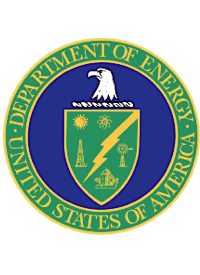
As the Solyndra bankruptcy debacle begins to unwind, President Obama and political leaders will find that an increasingly bright light is shone on the federal government’s mischievous administration of green energy loans and subsidies. William Yeatman, energy policy analyst at the Competitive Enterprise Institute (CEI) — a think tank promoting free markets and limited government — testified at a House Water and Power Subcommittee of the Natural Resources Committee hearing Thursday on a contentious loan program orchestrated by the Western Area Power Administration (WAPA), a power marketing administration within the U.S. Department of Energy.
Packaged in the American Recovery and Reinvestment Act (ARRA) — Obama’s 2009 economic stimulus plan — the $3.25 billion WAPA loan was authorized to finance various energy projects relating to renewable energy generation. Naturally, the solar technology manufacturer Solyndra, and its controversial bankruptcy, recent FBI raid, and special-interest scandal that left taxpayers on the hook for $535 million, has brought into question the financial viability of taxpayer-funded investments in green energy.
During Thursday’s hearing, Yeatman testified in support of H.R. 2915, a bill sponsored by Rep. Tom McClintock (R-Calif.) that would repeal ARRA’s $3.25 billion WAPA loan, which includes a taxpayer bailout provision for aborted renewable energy projects. The bailout provision stated, “If, at the end of the useful life of a project, there is a remaining balance owed to the Treasury under this section, the balance shall be forgiven.” In other words, if a WAPA project goes down, the taxpayers’ dollars go down with it.
Solyndra’s bankruptcy, coupled with its half-billion dollar loan guarantee from the Department of Energy, is a profound argument against the WAPA loan, as the crippling reality of failure could mean millions, and possibly billions, of dollars in taxpayer losses.
Rep. McClintock asserted:
Recent events make it clear that billions of dollars of taxpayer funds have been placed in jeopardy to support wind and solar companies that obviously lack the merit to attract private investments. These dubious interests rely instead on political connections with government officials to access taxpayer funds. As they collapse, the taxpayers end up holding the bag. It is time to require every sector of the energy industry to raise its own capital through its own merit rather than to perpetuate the crony capitalism that is now running rampant through this government.
House Natural Resources Committee Chairman Doc Hastings (R-Wash.) echoed McClintock:
Taxpayers should not be stuck footing the bill for expensive renewable energy transmission projects that turned out to be bad investments by the federal government. Repealing this WAPA provision will protect scarce taxpayer dollars and end several billion dollars of unspent Stimulus Act funds.
In describing the differences between private money, put forth by venture capitalists and investment banks, and public money, which is legislated into loans and subsidies by the federal government, Yeatman deduced that private money has a deep incentive for operational efficiency and watchful fiscal management. “WAPA green energy loans are riskier than private sector financing,” he testified. “As such, they should also be too risky for public sector financing. In light of America’s current deficit problems, now is not the time to unduly chance taxpayer money on the success or failure of novel renewable energy technologies.”
The WAPA loan is absent a profit motive, but simply designed to lend taxpayer money to renewable energy projects which advance environmentalist public policy and line the pockets of special interest groups, which in this case are renewable energy developers. In fact, ARRA developed the loan to deliver or facilitate “the delivery of power generated by renewable energy resources constructed or reasonably expected to be constructed.” So in effect, the Western Area Power Administration needs to oblige a “reasonable” expectation of repayment before taxpayer money can be siphoned through the WAPA loan authority.
Yeatman also argued that administering renewable energy projects is outside WAPA’s authority, as it has essentially built its own “green” investment bank. He used the example of the Department of Energy’s Loan Programs Office, which was established by the 2005 Energy Policy Act and administers the development of energy-efficient technologies. The investment competencies of the DOE’s Loan Programs Office have been undoubtedly clumsy over the past six years, as it has been flagged repeatedly by federal regulators — most recently for its massive loan guarantee to the bankrupt Solyndra. Observers are asking, with that said, what makes WAPA so competent to make such financially astronomical decisions, particularly when the WAPA loan authority was created in less than three months?
Yeatman added that ARRA’s focus on itself makes WAPA’s loan authority even riskier, as Obama’s stimulus package was specifically designed to rush money out the door — to “create” jobs as swiftly as possible. As noted in the Federal Register, “The Purpose of the Recovery Act [ARRA], which authorized this Program, is to stimulate job-creation in the near term.” Later, it stated, “The [WAPA loan authority] anticipates a combination of new transmission construction and upgrades to existing infrastructure … in order to meet the objectives of the Recovery Act to create jobs in the near term and rapidly develop infrastructure to deliver renewable resources.”
So how is it that Solyndra failed? Why is the WAPA loan such a risky investment? Yeatman spelled it out clearly:
This discrepancy in riskiness between private sector lending and financing by the WAPA loan authority is increased by the fact that the American Recovery and Reinvestment Act allows for the forgiveness of loans if they cannot be repaid. Whereas private sector lenders suffer direct financial harm if their loans default, the WAPA loan authority is under no such constraints, because the American taxpayer in general — rather than only the Western Area Power Administration or its customers — are on the hook. This is a moral hazard conducive to fiscal mismanagement.


